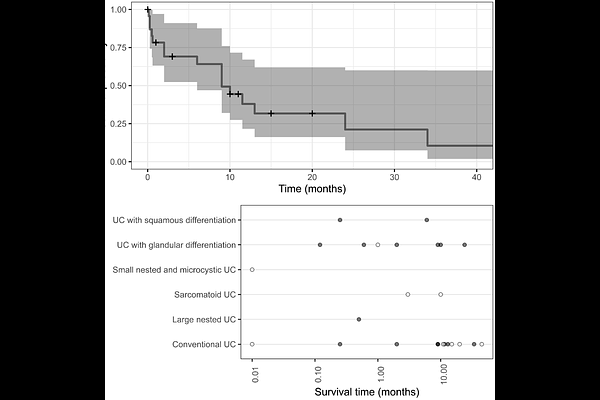Frequency and Characterization of Rare Histologic Subtypes in Canine Invasive Urothelial Carcinoma

Frequency and Characterization of Rare Histologic Subtypes in Canine Invasive Urothelial Carcinoma
Corbett, M. P.; Elbadawy, M.; Woodward, A. P.; Cheville, J. C.; Wickham, H.; Nicholson, H.; Catucci, M.; Melvin, B. J.; Ahmed, B.; Zdyrski, C.; Oliveira, L. J.; Howerth, E. W.; Pawlak, A.; Fasina, O.; Mochel, J. P.; Allenspach, K.
AbstractThe histologic and molecular heterogeneity of human muscle-invasive bladder cancer (MIBC) is a major contributor to poor treatment outcomes. While most cases of MIBC are diagnosed as conventional urothelial carcinoma (UC), there is growing recognition of histologic subtypes and divergent differentiation within conventional UC. This is clinically significant, as some require modification of therapy and some are associated with more aggressive behavior. Spontaneously occurring UC in dogs has been shown to exhibit histologic and molecular features that closely resemble those of human MIBC. In this study, we evaluated 31 canine UC tumor samples for histologic subtypes and divergent differentiation. Slides were reviewed by a human uropathologist and three board-certified veterinary pathologists and assessed for expression of uroplakin III and E-cadherin. All tumors were classified as high-grade UC. Fifteen cases were identified as conventional UC. Among the remainder, eight displayed glandular differentiation, four were classified as sarcomatoid UC, two showed squamous differentiation, and one case each was classified as large nested and tubular and microcystic subtypes. In summary, this study found a higher frequency of certain histologic subtypes and divergent differentiation in canine UC- particularly sarcomatoid UC and UC with glandular differentiation-compared to previous reports in both canine UC and human MIBC. Conclusion: The relatively high prevalence of the sarcomatoid UC subtype in dogs observed in this study suggests that canine UC may serve as a valuable translational model for evaluating novel therapeutic agents, particularly for this rare and aggressive variant in humans.